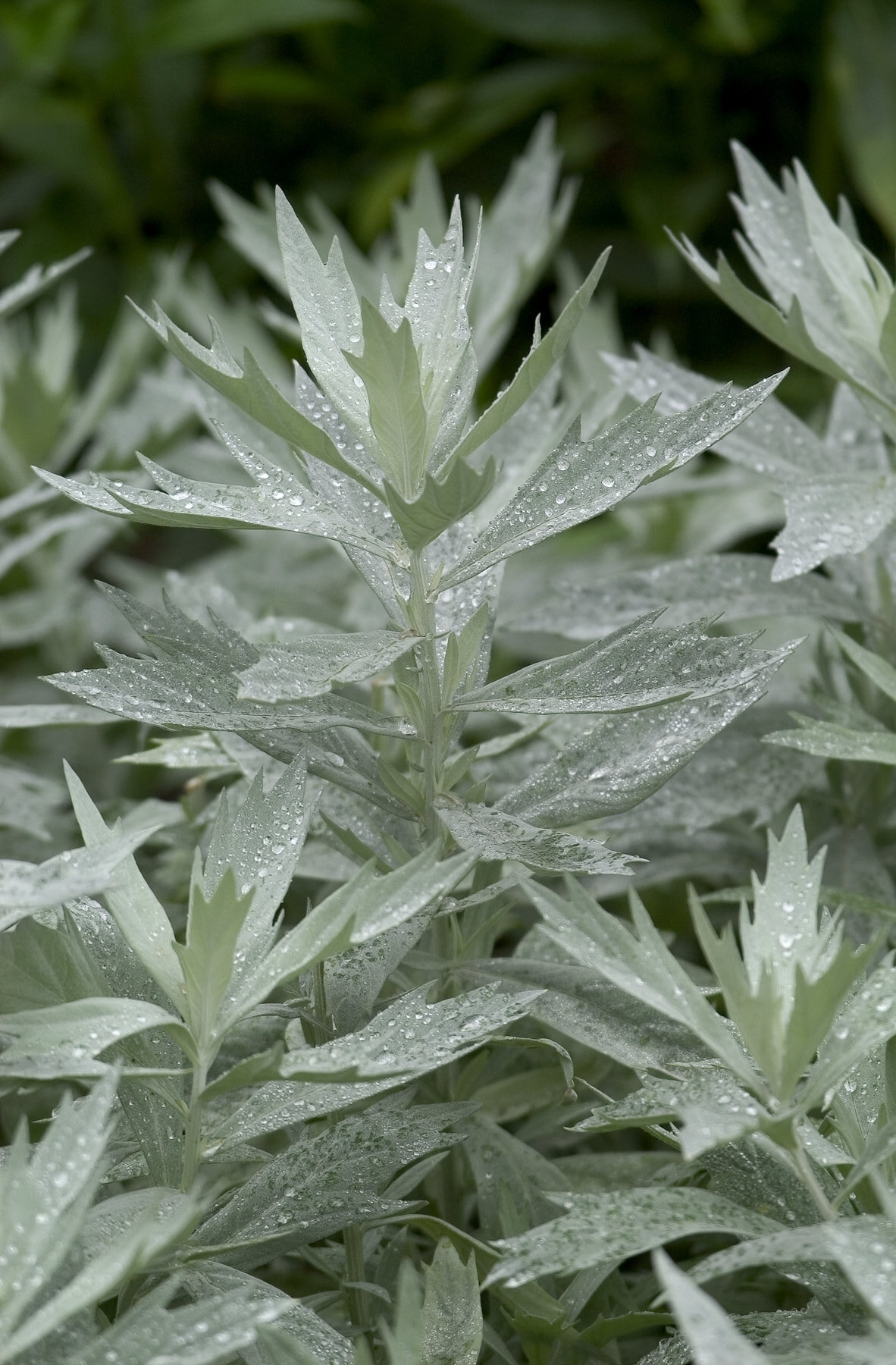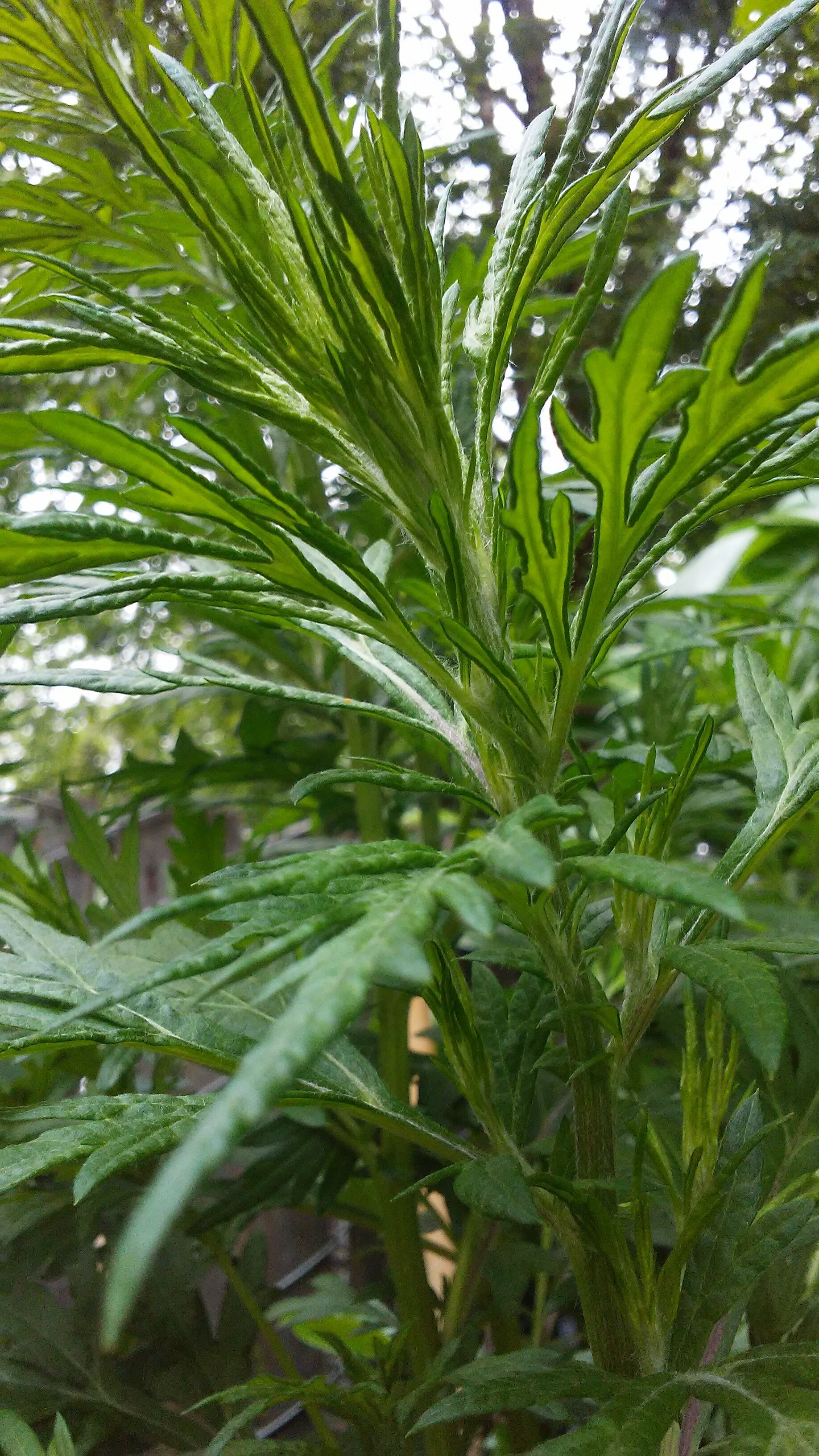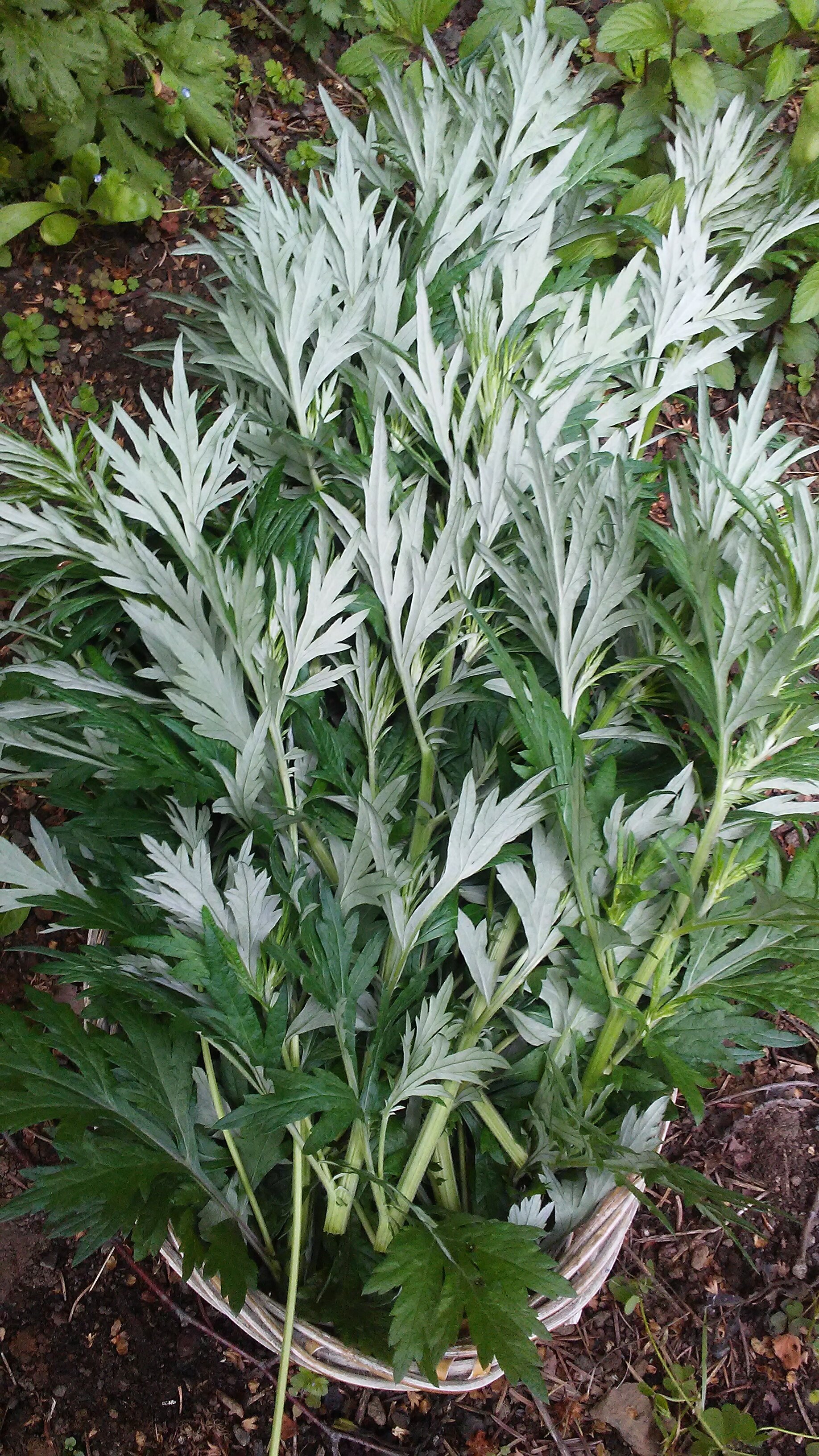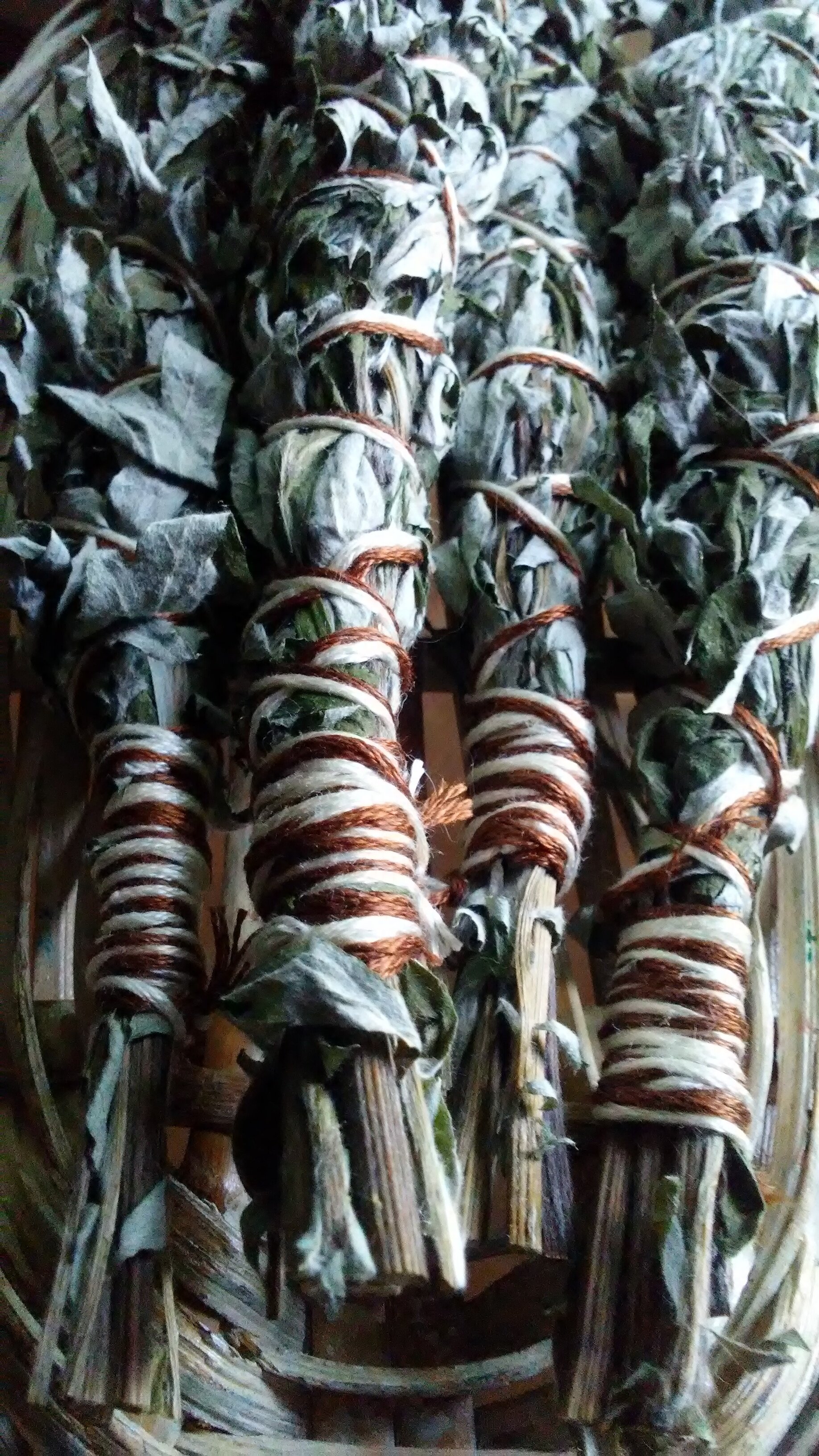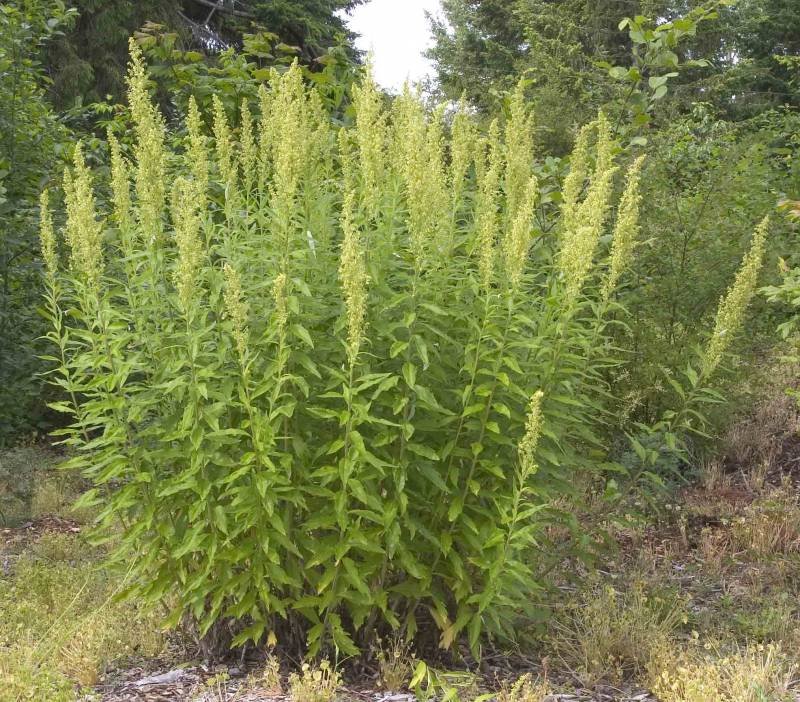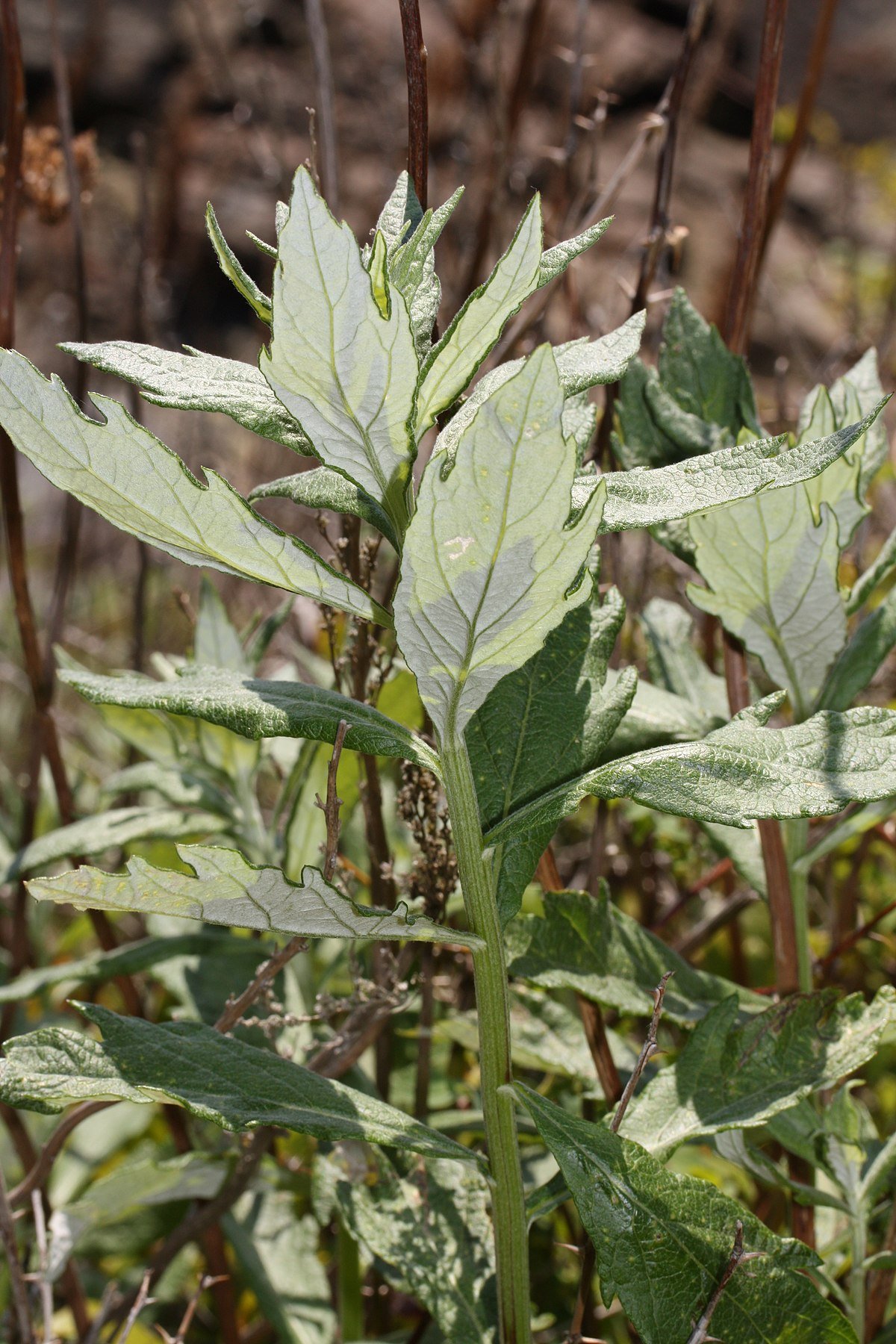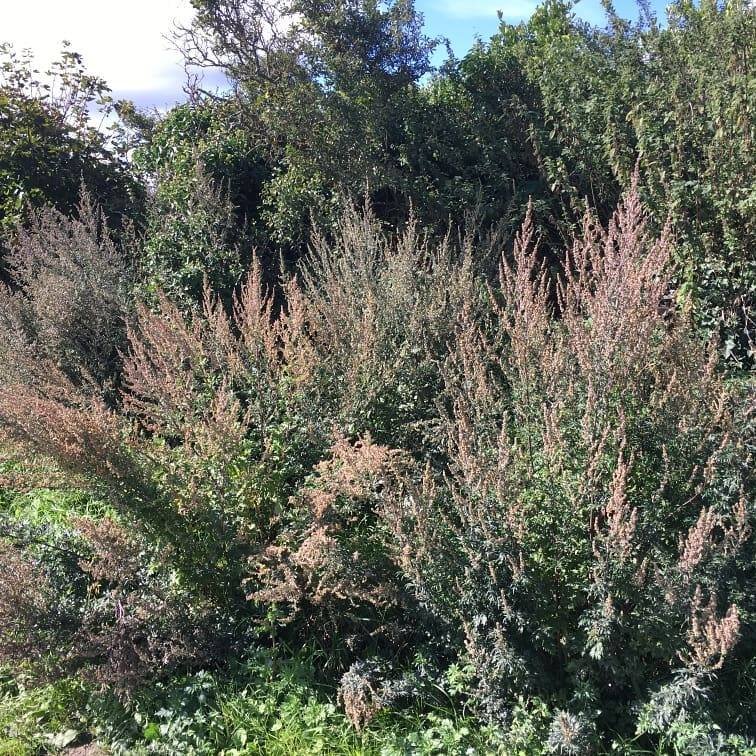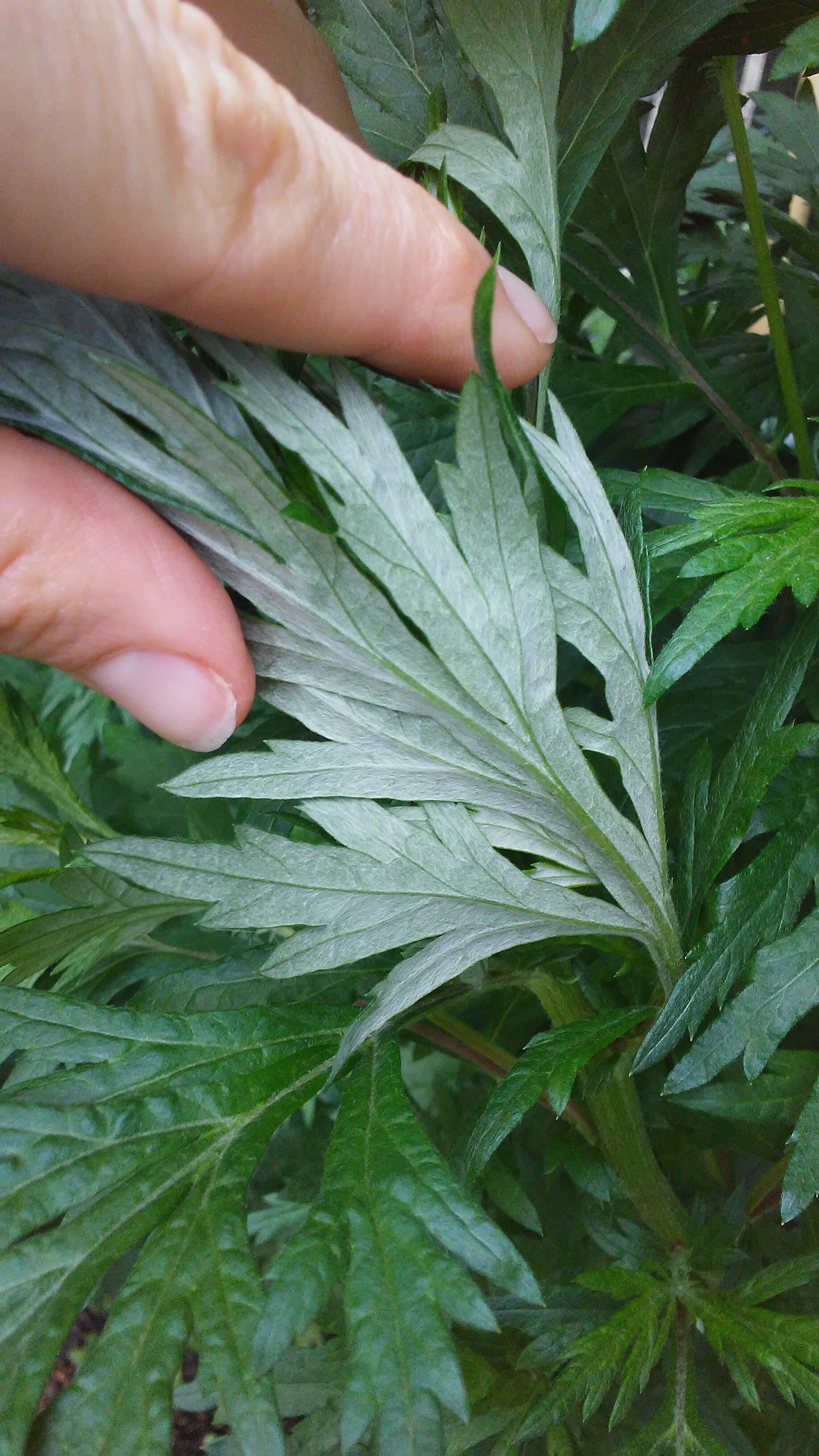Did you know that there are three different types of Mugwort? I discovered this only a couple of years ago when I came across a photo labeled “Mugwort” that looked nothing like the mugwort I knew. I was very familiar with Artemesia vulgaris, the most common of the species. Puzzled, I began to dig for an explanation and would like to share with you my findings.
From my research I learned of Artemesia ludoviciana or western mugwort (pictured below on left). Often called prairie sage or western mugwort, this species is native to the U.S., Mexico and Canada and is sometime mistaken for white sage. It has alternate, slender lobed and non lobed leaves, is pollinated by the wind and is hermaphroditic. It's a hardy perennial that thrives in warm and dry climates. High in volatile oils, it has a more potent scent than its kin Artemesia vulgaris and has soft, downy hairs on both sides of its leaves. Due to is strong aroma and hardier structure, western mugwort makes a lovely smudge and retains its fragrance much longer than the vulgaris variety.
Artemesia vulgaris is the most commonly spoken of, sold and used type of mugwort. It's native to temperate climates throughout Europe, Asia, Alaska and Africa and was at some point brought to the U.S. The word “vulgaris” translates to “common” and helps to explain why it' the most popular of its kind. It has broad, alternate lobed leaves with a green top and silver, fuzzy (downy) underside. It's a perennial with rhizome like roots that spread and allow the plant to reproduce abundantly. In my opinion, the vulgaris variety of mugwort has a softer, more feminine quality to it.
A third variety is Artemisia suksdorfii (pictured below on left). Known as coastal mugwort, coastal wormwood or suksdorf sagewort, it grows near waters along the coast of Washington, Oregon, California and southern Vancouver BC. It has a rich, potent scent and is often bundled, dried and used as a ceremonial smudge. It has narrow, lobed hairless green leaves with silver-fuzzy undersides and produces yellowish-green flowers that bloom mid-late summer. It grows in full sun and is reproduced by its rhizome like roots.
All three offer the same medicinal and magickal properties and can be used interchangeably. Depending on where you live, I suggest growing both types and deciding for yourself which one you prefer.
If you plan to purchase mugwort from an herb shop or herbal distributer, chances are Artemesia vulgaris will be the type available. You may be able to find cut and dried Artemesia ludoviciana from a small herb farm local to your area, check around and see what you can find.
Sources
https://pfaf.org/user/Plant.aspx?LatinName=Artemisia+ludoviciana
https://en.wikibooks.org/wiki/Horticulture/Artemisia_vulgaris
https://gobotany.nativeplanttrust.org/species/artemisia/vulgaris/
https://www.cs.rochester.edu/users/faculty/nelson/wildflowers/glossaries/leaves/index.html


